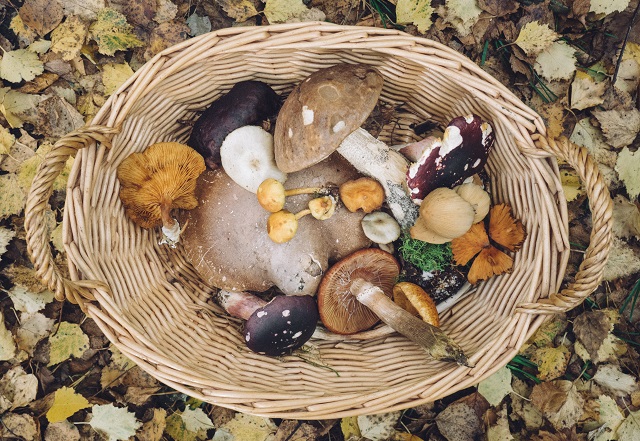Searching for Christmas gifts for the youngest members of our family, I came across a “gratitude journal,” a forum for recording daily expressions of thankfulness. This is something our young children take very seriously, asking everyone at the table to say what they are grateful for at the end of each day apart.
Gratitude is everywhere now, and thankfully so. It could be a smug reflection on how one’s station in life exceeds that of “those less fortunate.” But at its best, gratitude at the root of our consciousness keeps us reminded of what humans share.
We can be especially thankful for what nature gives us that keeps life operating, even as we fret over troubles: the air cleansed by trees, the ground refreshed by dew, even the decomposers that, unnoticed, break down last year’s leaves to tidy the ground and renew the soil. Not to mention the blue sky, falling snow, full moon, oceans, streams, and other wonders that inspire awe.
Gratitude keeps us mindful of rain falling gently on thirsty ground; sunshine warming our faces and spirits; birds gracing our ears with song; oaks and pines towering above us; family members, friends, and acquaintances who make life sweet; gracious strangers unexpectedly encountered.
We live in the country, about half a mile from both a railroad track and an interstate highway, and under the flight paths of two local airports. When the stars first appear each night, we adjust our eyes to distinguish planets from passing planes. Then, when the world is hushed, we still hear the rumble of trucks, the whistles of freight trains.
With an effort, I tear myself from fretting over the fuel expended by all this restless transport, the air pollution and the carbon burden, and instead think on the quiet rumble of all that goes on around us, even despite us. With an effort, I look up from work to see the occasional fox loping across the field or the migrating duck resting in the pond, silent visitors that signal that life continues even as humans struggle.
Gratitude counteracts despair. It is fullness without greed. It’s expectancy without envy. It’s wonder outpacing worry. It’s restfulness in the midst of all we rightly wish to improve, reflection on what is already mending. Gratitude gives strength to change what obstructs joy for others. It reminds us to encourage those who radiate delight. It provides the supporting base notes for the melodies we create with our daily activities, and it directs our efforts toward larger goods.
Like our lives, Scripture is filled with drama. But it is also replete with images and remembrances of all God has done to build and restore our world. All these images and remembrances are the low rumble of prompts directed now to us, reminding us of the larger framework of creation in which our little lives take place.
January 5, 2020
- Jeremiah 31:7-14 anticipates restoration for Judah as agricultural welfare: grain, wine, oil, flocks, and herds: “Their life will be become like a watered garden, and they shall never languish again.”
- Sirach 24:1-12 describes Wisdom’s origin before all creation, and her influence throughout all nations and lands, over heavens, seas, and earth.
- Psalm 147:12-20 praises God’s command over natural forces and provision of food for the world’s inhabitants.
- Ephesians 1:3-14 describes God’s plan to unite all things, both heavenly and earthly, in Christ.
- John 1:(1-9), 10-18 compares Jesus to the original light of creation, which “shines in the darkness.”
January 12, 2020 – Baptism of the Lord
- Isaiah 42:1-9 places God’s restoration of the suffering nation parallel to God’s mighty acts in creating heavens, earth, and all inhabitants.
- Psalm 29 describes God’s majesty over powerful features of ancient Israel’s natural world: the sea, Lebanon’s gigantic cedars, and Kadesh’s fierce wilderness.
- Matthew 3:13-17 narrates Jesus’ baptism in terms recalling the world-changing flood in Noah’s day—God’s choosing of one for redemption, and the saving message conveyed through a dove.
January 19, 2020 – Second Sunday after Epiphany
- Psalm 40:1-11 employs features of the natural world as metaphors describing both dangers from which God delivers and security in God’s deliverance.
- John 1:29-42 imagines Jesus as a lamb and the Spirit as a dove.
January 26, 2020 –Third Sunday after Epiphany
- Isaiah 9:1-4 uses the rhythm of night and day to describe despair and hope.
- Psalm 27:1, 4-9 draws images from the natural world, describing God as “light” and “rock.”
- Matthew 4:12-23, invoking Isaiah 9, employs the metaphor of light.
February 2, 2020 – Fourth Sunday after Epiphany
- Micah 6:1-8 calls the mountains and hills as witnesses in the prophet’s accusations of his hearers.
- Psalm 15 proclaims that the righteous will dwell on God’s holy hill.
- Matthew 5:1-12 locates Jesus’ teaching on a mountain.
February 9, 2020 – Fifth Sunday after Epiphany
- Isaiah 58:1-9a (9b-12) contends that who practice economic justice will be like watered gardens, whose springs never fail.
- Matthew 5:13-20 compares the faithful to salt and light.
February 16, 2020 – Sixth Sunday after Epiphany
- Deuteronomy 30:15-20 foresees blessing and prosperity in the land for those who serve God.
- 1 Corinthians 3:1-9 compares the Corinthians to a garden, planted and watered by apostles, but grown by God.
February 23, 2020 – Transfiguration Sunday
- Exodus 24:12-18 employs mountain, cloud, and fire to magnify God’s glory in the giving of the ten commandments (see also Psalm 99).
- Matthew 17:1-9 employs another mountain to magnify Jesus’ glory in the transfiguration (see also 2 Peter 1:16-21).
Patricia Tull’s bimonthly Working Preacher column, “The Great Community,” focuses on ecological themes for preaching.

